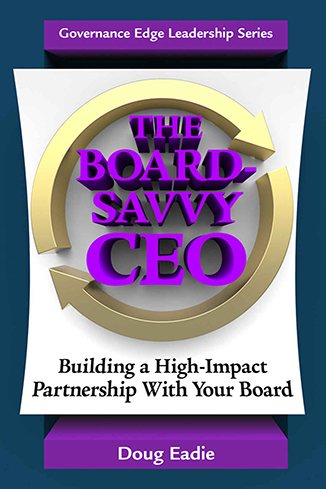In this new podcast, CEO Jim McGuirk and his Chief Operating Officer (COO), Renee Fillette, explain why the CEO-COO partnership is working so well at Astor Services for Children and Families, headquartered in Rhinebeck, New York. The last article posted at this blog – “So You’re Thinking About Adding a Chief Operating Officer to Your Executive Team?” – tells the true story of a CEO-COO team at the helm of an international professional association that came within a hair of breaking up for a variety of reasons. By contrast, over the past 2 ½ years, Jim and Renee’s partnership has grown steadily stronger and is now firmly institutionalized and paying big dividends for Astor Services.
Interestingly, like many structural change initiatives I’ve observed over the years, the Astor CEO-COO configuration was born in crisis: a serious quality control lapse in one of Astor’s programs. What’s surprising is that the crisis was so long in coming, in light of Jim’s incredible span of control as Executive Director/CEO: 12 direct executive reports. It didn’t take long after the crisis occurred for Jim and his Board to conclude that it was humanly impossible for him to do an effective job of overseeing all internal operations while paying adequate attention to Astor’s strategic agenda and handling the increasingly critical external/stakeholder relations function. So with consulting assistance they examined various structural solutions to the CEO over-extension problem, eventually arriving at the CEO-COO model that’s been in place for 2 ½ years. It’s paid off handsomely for Astor. With only four direct executive reports, Jim can focus on Astor’s long-term strategic directions, on strengthening Astor’s public image, and on nurturing relationships with important stakeholder organizations. And as Jim’s COO, Renee can keep a close eye on Astor’s program operations, guarding against the kind of crisis that got Astor on the re-structuring road almost three years earlier.
Why does the CEO-COO partnership work so well at Astor Services and remain so healthy? For one thing, as Jim and Renee explain in their podcast, they came to the partnership philosophically in sync – passionately believing in Astor’s mission and paying allegiance to the same core values. They also point out that strong personal chemistry helps bond their partnership. They really do enjoy working closely together despite some differences in their leadership styles, and Jim, strongly committed to Renee’s success, serves as her most valuable mentor. And, of course, close, frequent communication is critical to keeping the partnership healthy. Although Jim is not the least bit afflicted by the notorious look-over-the-shoulder syndrome, he does make sure he’s easily accessible to Renee, who knows Jim will be open to discussing any issues she brings to the table.
We’d love to hear from you about your experience with the CEO-COO executive office model. And be on the lookout for a coming article about an alternative to going the CEO-COO route: adding a chief of staff position in the CEO’s office.






